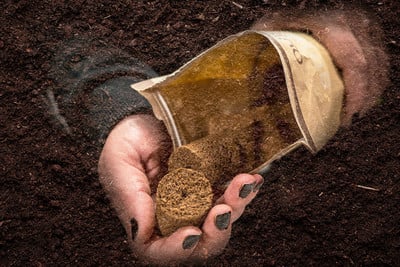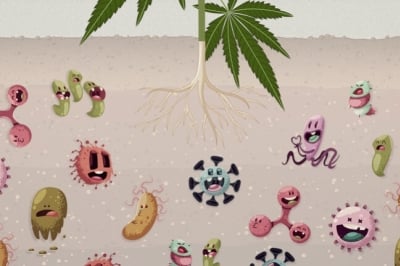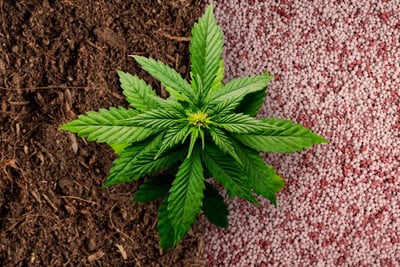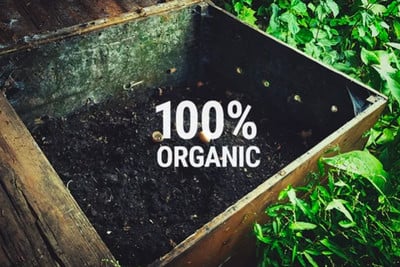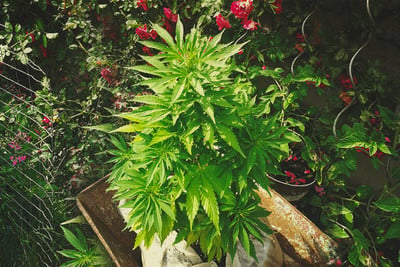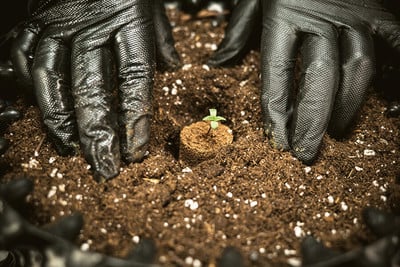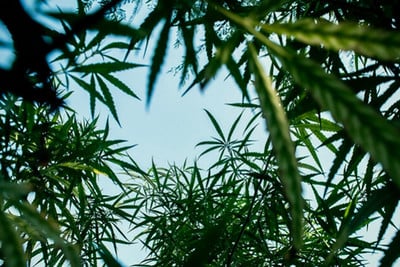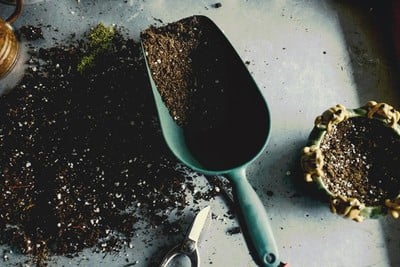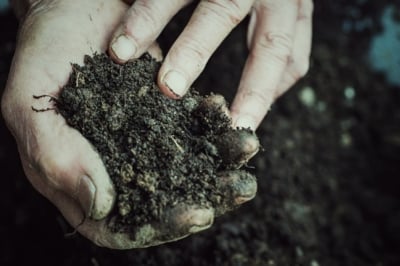.

How to Use Honey in Cannabis Cultivation
You're probably used to using natural products as a cannabis grower. Compost, ferments, worm castings, and mulch all fall into this category. But what about honey? While much different than the other options, honey serves as an effective input when growing weed, from feeding plants to boosting soil health. Find out how to use it below.
As one of the sweetest bounties found in nature, honey goes down well in endless recipes, as well as on its own. Taste aside, this bee-derived substance also comes in handy when growing weed! Keep reading to find out how honey helps to fertilise cannabis plants, boost soil health, and enable cuttings to thrive.
Contents:
Does Honey Help Cannabis Grow?
If you prefer to take a natural and organic approach in your cannabis grow room or garden, you’ll be pleased to know that a substance currently sitting in one of your kitchen cupboards can serve as a sweet source of fertility. Honey can support the growth of cannabis plants in numerous ways[1], from providing key macronutrients to stimulating root growth and regulating microorganisms that make up the soil food web.
As you’re probably aware, honey derives from the laborious work of certain species of bees. These complex organisms harvest nectar from flowering plants and deposit it in cells in their hive. While honey helps bees to thrive, and also keeps our sweet tooth satisfied, it contains an array of nutrients and other bioactive compounds that come in handy in any cannabis garden.
Molasses vs Honey
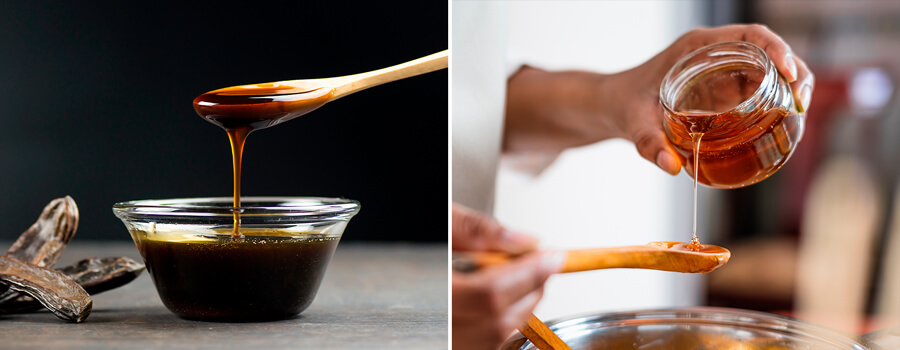
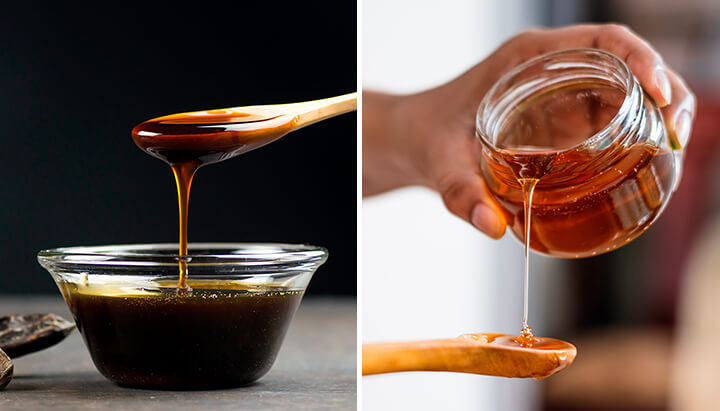
Before we dive into the uses of honey when growing weed, we’re going to cover how the substance differs from another sugar-rich input often used in gardening: molasses. While both natural sweeteners, honey and molasses differ in the following ways:
- Origin: Bees make honey, whereas molasses is a thick, tar-like byproduct that results from boiling cane juice.
- Flavor: In contrast to the sweet and floral flavor of honey, molasses has a rich and somewhat bitter taste.
- Consistency: Honey comes in various textures, including runny and solid. In contrast, molasses is a much thicker and more viscous substance.
- Color: Honey ranges in color from light gold and translucent to opaque and yellow, whereas molasses is dark brown.
Despite their differences, both honey and molasses are excellent sources of sugars and minerals that can help to elevate plant and soil health.
The Benefits of Honey for Cannabis Plants
Honey and gardening might seem like an odd pairing, but we’re about to make it all make sense. Below are the key benefits of using honey in your cannabis grow:
- Honey is a good source of sugars: Plants spend a whole lot of time making their own sugars through photosynthesis. They need this form of energy to conduct basic cellular functions. While plants are more than capable of sustaining themselves under an adequate light source, adding honey into the soil will provide another source of sugar that plant roots can uptake from the rhizosphere (the space immediately surrounding plant roots).
- Honey is a source of plant macronutrients: Honey contains macronutrients crucial for cannabis, such as nitrogen, potassium, and phosphorus. Although they are present as trace elements, they play essential roles in protein synthesis, water transportation, and enzyme activation.
- Honey feeds members of the soil food web: Healthy living soils house billions of different organisms, including fungi, bacteria, protozoa, and nematodes. These critters help to cycle nutrients, which ultimately benefits cannabis plants. Plants send many of the sugars they make during photosynthesis underground to help these populations thrive. Adding honey into the mix will help to bolster their numbers even further.
- Honey possesses antimicrobial compounds: As well as aiding beneficial microbes, honey contains antimicrobial compounds that could help to deter pathogens[2].
How to Use Honey in Your Cannabis Grow
Now you’re aware of the potential benefits of using honey when growing cannabis. But how should you go about using it? In what follows, we’ll highlight the very best ways that you can put this bee-derived product to use in your growing space.
1. Honey as a Rooting Hormone for Weed Clones
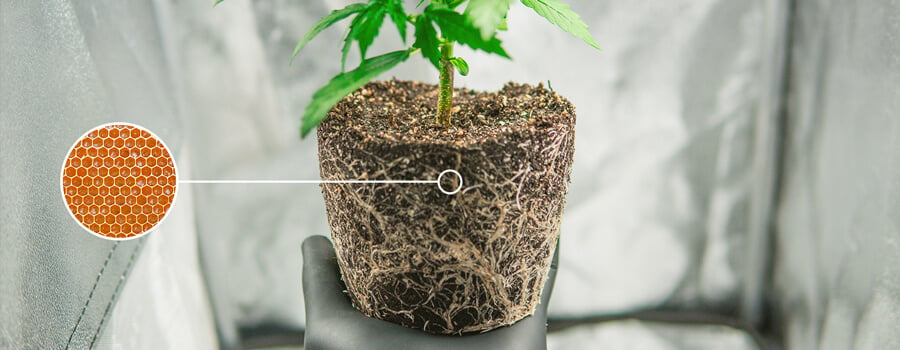
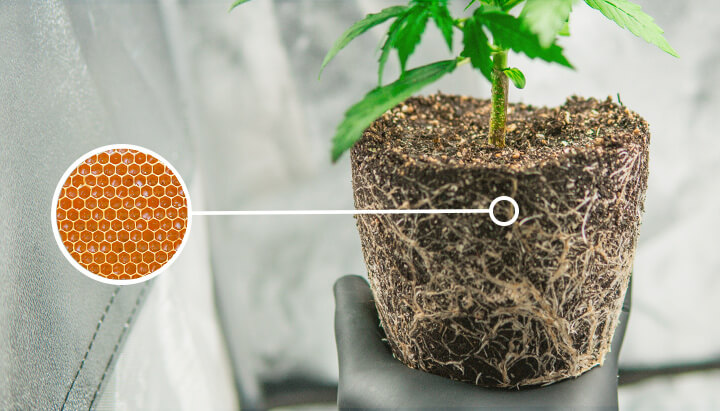
Honey works great as a natural and sustainable rooting hormone option compared to conventional synthetic products. Here’s why:
- Antimicrobial: The antimicrobial compounds found in honey help to inhibit diseases in young clones caused by types of fungi and bacteria.
- Key enzymes: Honey contains several enzymes and amino acids[3] that help to stimulate root growth.
- Cost-effective: Over the long run, you’ll save money by opting for honey instead of synthetic products. Plus, you can eat it yourself!
To use honey as a rooting hormone, follow these easy steps:
- Take a cutting from a healthy mother plant using sterilised scissors or a pruning knife.
- Remove the lower leaves from the cutting, leaving only a couple on the top of the clone.
- Dip the cut end of the clone into some organic honey.
- Insert the cutting into a small pot containing vermiculite, and place it in a warm and well-lit spot.
- Transplant into soil once a healthy root system has formed.
2. Honey as a Cannabis Fertiliser
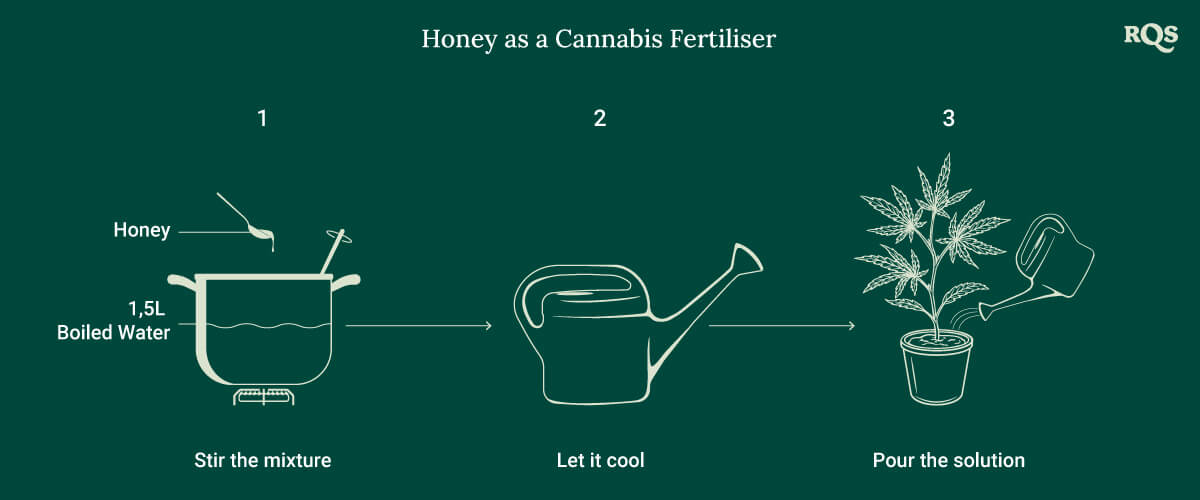
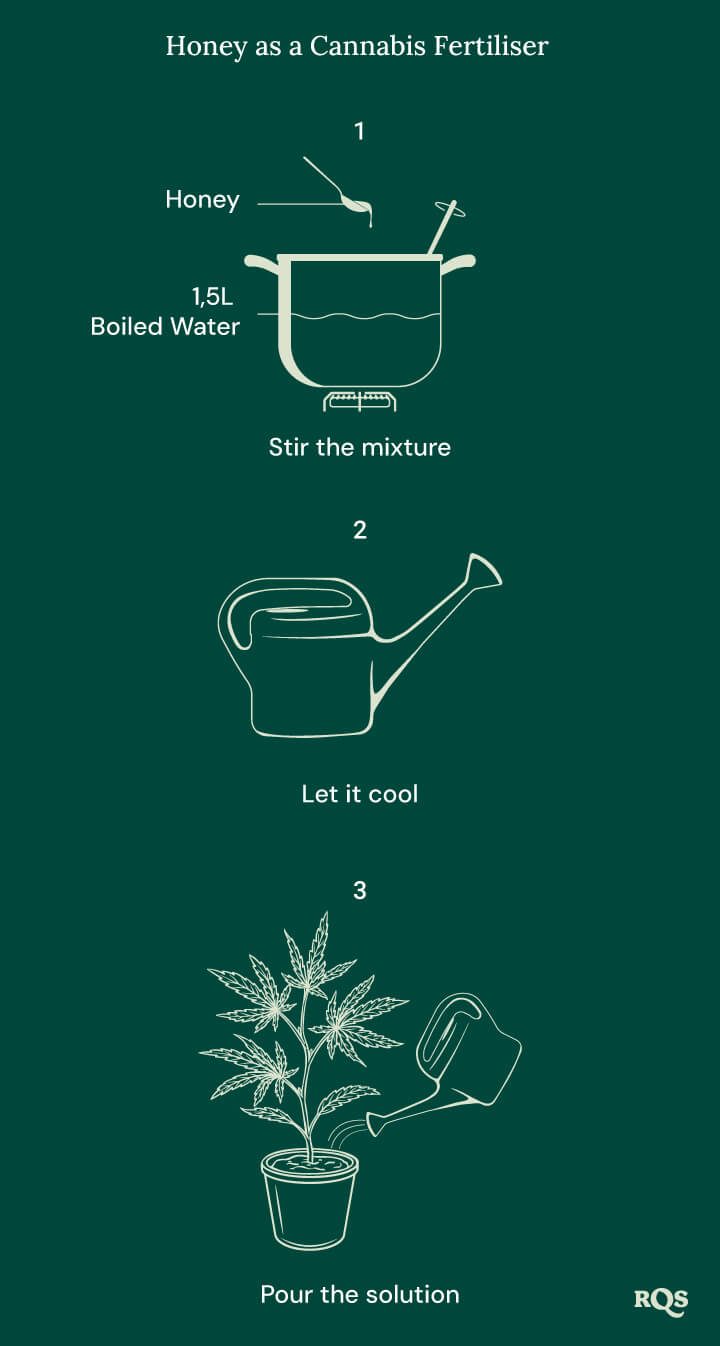
Honey contains an array of macronutrients and micronutrients that weed plants need to grow optimally. As well as all three macronutrients, honey also serves as a source of calcium, magnesium, iron, and zinc.
Follow these steps to use honey as a fertiliser in your weed garden:
- Mix one tablespoon of organic honey into 1.5l of boiled water.
- Stir the mixture well so the honey completely dissolves into the solution.
- Leave the mixture to cool.
- Pour the solution into a watering can and apply it as a soil drench.
3. Honey as a Foliar Spray
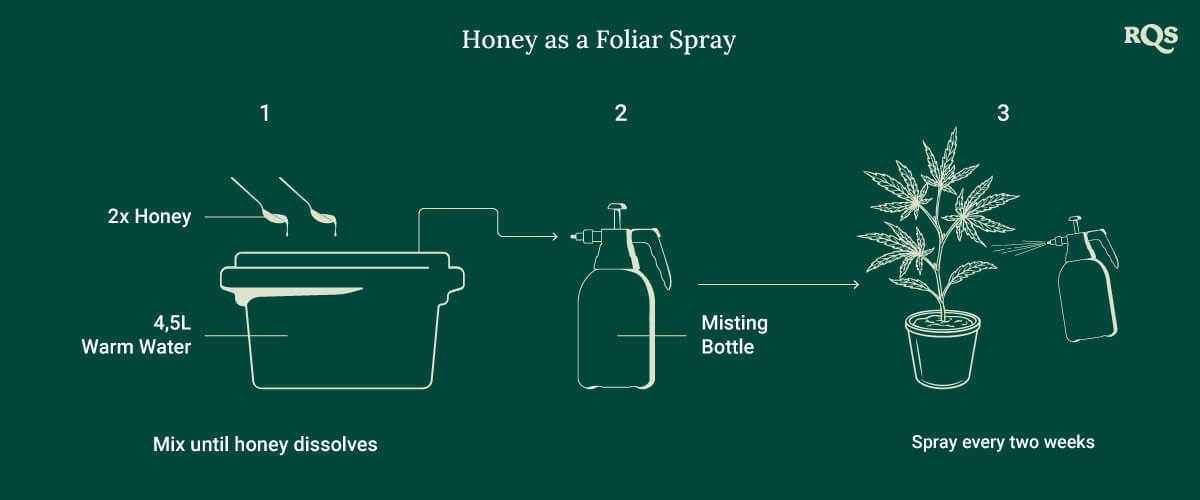
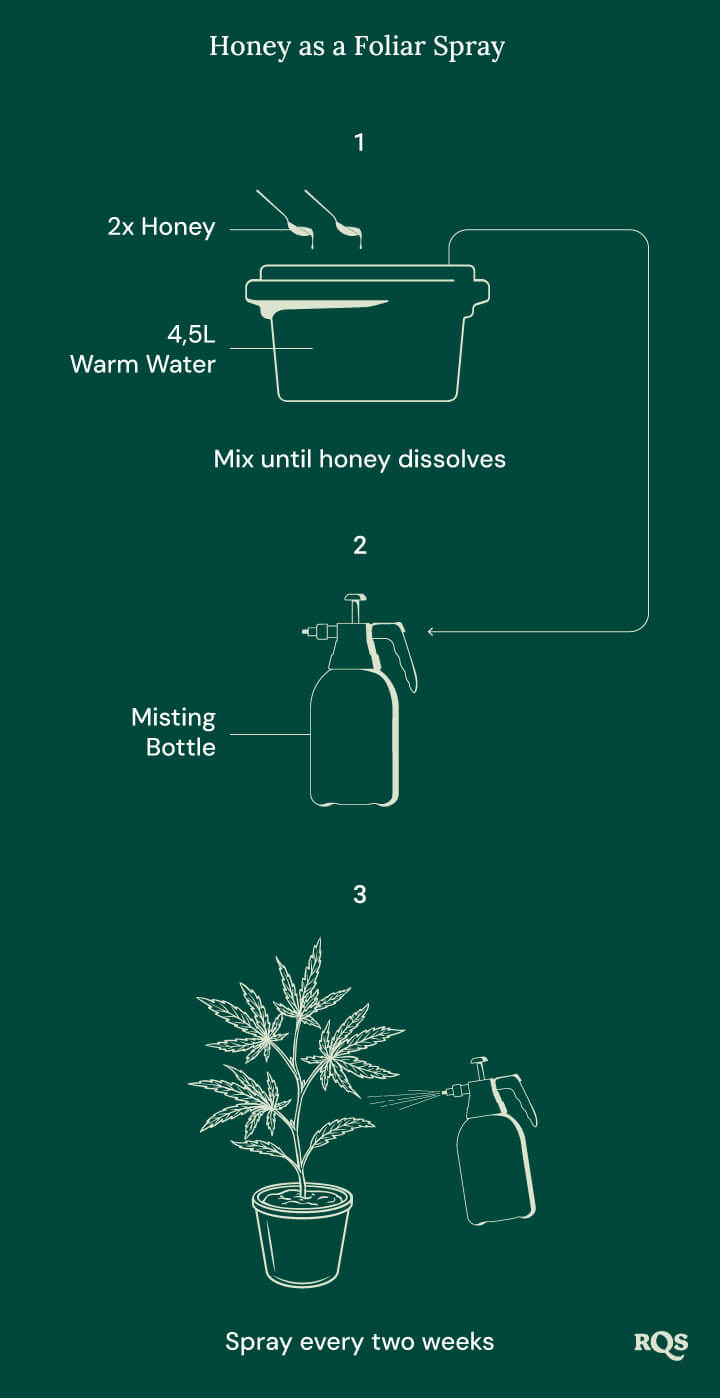
Foliar sprays take advantage of the small openings on cannabis leaves. Known as stomata, these structures allow growers to bypass the root system and deliver molecules directly into plants. Honey foliar sprays provide nutrients and also likely influence the phyllosphere—the community of microbes that lives on plant leaves.
Follow these steps to make your own honey foliar spray:
- Add two teaspoons of honey to 4.5l of warm water.
- Mix well until the honey dissolves.
- Pour the mixture into a misting bottle.
- Spray over fan leaves, with a particular focus on any that show signs of deficiency.
- Repeat this process once every two weeks.
Honey Traps Help to Keep Pest Pressure Down
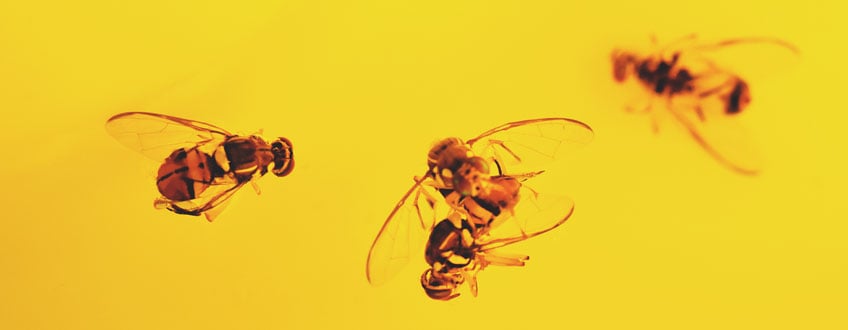
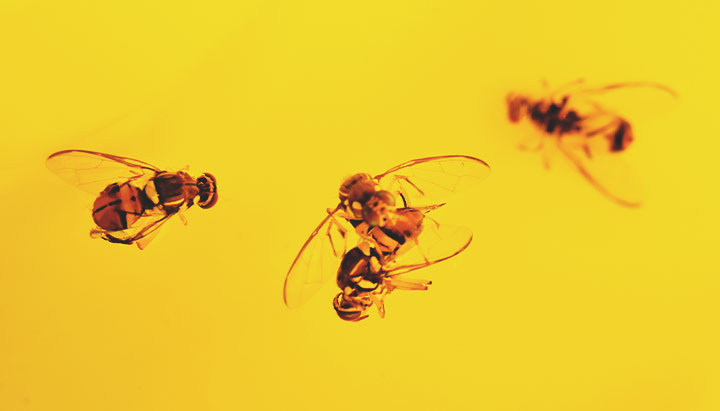
Honey can help to remove pests from your growing space. Insert small jars into your soil, so the lip of the jar sits just above the soil surface. Add some honey and, over the next few days, watch your trap catch slugs and fungus gnats.
How to Measure the Sugar Content of Cannabis Plants
There are many ways to determine the health of a cannabis plant. Many growers are used to scouting out their crops in search of pests, diseases, and deficiencies. If you appreciate attention to detail, then you’ll also want to start measuring the sugar content of your cannabis plants. But why?
Sugar plays a vital role in every plant cell[4]. Adequate levels of sugar correlate to healthy plants, whereas low levels are a sign of poor photosynthesis or other issues. While you can’t measure sugar levels specifically, you can measure the next best thing: Brix.
The Importance of Brix When Growing Weed
As a scale of measurement, Brix (which uses the unit °Bx) measures the amount of dissolved solids in a plant sample. As well as measuring other solids, such as secondary metabolites and proteins, Brix provides a pretty accurate measure of the sugar levels within a sample. This becomes obvious when looking at the Brix scores of vegetables; the higher the Brix, the sweeter the food.
Measuring Brix throughout the growing cycle can give you a peek into the inner workings of your cannabis plants. Those with high Brix scores are producing more sugars. Not only does this mean they're destined to become more productive, but their health and ability to resist pests and diseases will likely also be higher
How to Determine Brix Levels
Growers measure Brix using a Brix meter. This device looks somewhat like a telescope. It features a sample screen on one side of the screen, and an eyepiece and focus adjustment on the other. As light shines through the sample end, it refracts based on the level of dissolved solids in the sample. When looking through the eyepiece, you’ll see a scale that marks the degree of refraction or, in this case, °Bx.
To collect your sample, you’ll need to harvest some fan leaves and mash them up in a bowl (a pestle and mortar work great) to extract the juice inside. Next, apply enough juice to cover the sample screen and then close the transparent lid. Then, aim the sample side toward a light source and take your reading. It’s important to know that Brix levels are in constant flux due to several variables, including the time of day. For this reason, you should always take your Brix reading at the same time of day during similar weather (such as only while the sky is clear).
Healthy cannabis plants clock in with a Brix score of anywhere between 12–20. However, those at the upper end of this spectrum are more likely to provide better yields and display superior pest resistance. To bump up your numbers, consider adding some honey into your input regimen, and see what happens!
Honey and Cannabis: A Versatile Partnership
There you have it: that honey in your kitchen cupboard also doubles up as a handy input in your cannabis growing space. So, will you decide to add honey to your feeding regimen? After all, it’ll help provide key nutrients, regulate the soil microbiome, and help your cuttings thrive!
- The effect of weight-bearing exercise and non-weight-bearing exercise on gait in rats with sciatic nerve crush injury - PubMed https://pubmed.ncbi.nlm.nih.gov
- Antibiotics | Free Full-Text | Microbial Community Structure among Honey Samples of Different Pollen Origin https://www.mdpi.com
- https://www.tandfonline.com/doi/full/10.1080/14620316.2019.1592711
- Dietary sugar consumption and health: umbrella review | The BMJ https://www.bmj.com


























